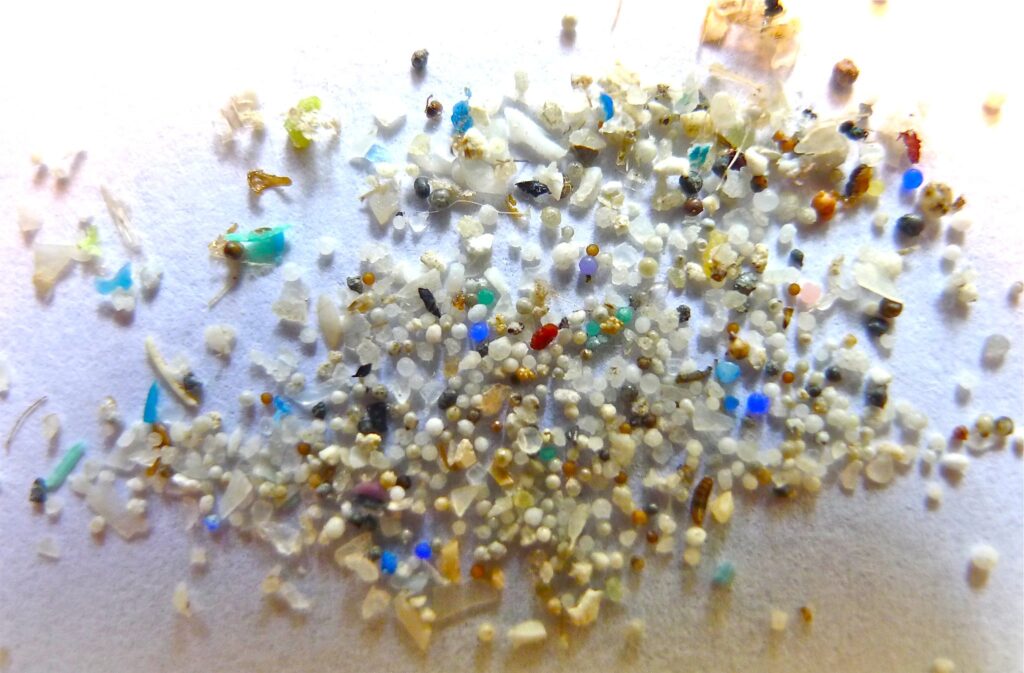
Many of us are aware of the infamous ocean “garbage patches” of floating plastic. The Great Pacific Garbage Patch is roughly the size of Texas. But over 10 million tons of plastic waste enter the oceans each year and the floating patches only account for 1% of that total. The remaining 99% of the plastic ends up in the deep ocean, generally in the form of microplastics – tiny fragments of large plastic debris that have broken down as well as manufactured polyethylene beads used in various products.
According to a new study published in the journal Science, there are actually microplastic hotspots on the ocean floor, formed by deep-sea currents that act as conveyer belts moving the tiny plastic fragments around. One of these hotspots – in the Tyrrhenian Sea off the west coast of Italy – contained 1.9 million microplastic pieces in just one square meter of seafloor. This is the highest reported value for any place in the world.
Because of their small size, microplastics can be ingested by organisms across all levels of the marine food chain and eventually find their way into human diets.
The spatial distribution and ultimate fate of ocean microplastics are strongly controlled by near-bed thermohaline currents. These are deep-ocean currents driven by differences in water density, which is controlled by temperature and salinity. Thermohaline currents are known to supply oxygen and nutrients to the flora and fauna found at the ocean bottom. As a result, deep sea biodiversity hotspots are likely to be in same places where there are microplastic hotspots.
The discovery of these deep- sea hotspots is just another reason why we need behavior and policy interventions to limit the flow of plastics into natural environments.
**********
Web Links
Seafloor microplastic hotspots controlled by deep-sea circulation
Photo, posted September 6, 2012, courtesy of Oregon State University via Flickr.
Earth Wise is a production of WAMC Northeast Public Radio.
Leave a Reply